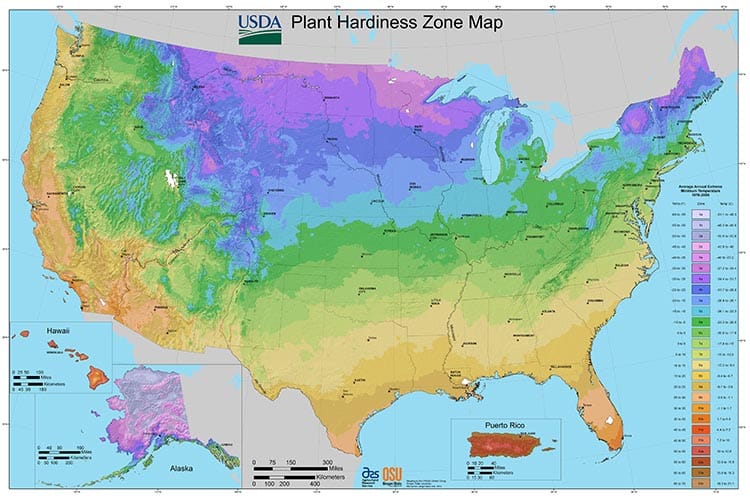Your yard is a palette waiting to be painted. The land around your home is an opportunity to express your creativity and increase your home’s curb appeal. Landscaping is an enjoyable hobby, whether you find satisfaction in digging your hands into the ground yourself or hiring assistance with the heavy lifting.
Landscaping involves the process of making your home and outdoor living spaces more attractive and usable. More than just picking the right plants, landscaping includes designing and implementing a plan for plants, terrain, and structure.
Here’s a comprehensive guide for everything you need to know to get started with landscaping.
Developing your Landscaping Vision
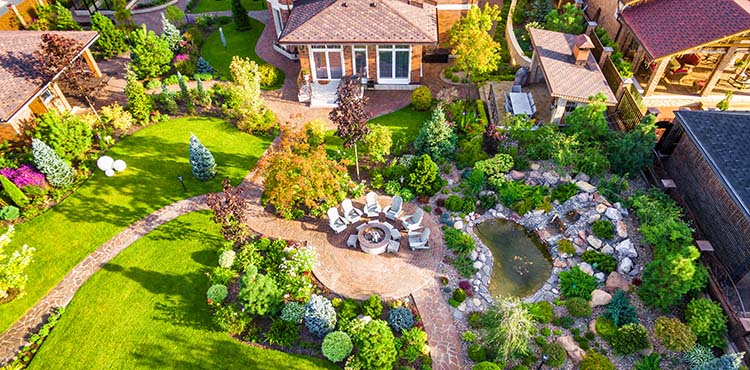
As with any process, landscaping starts with a plan. While you could start picking out plants you find attractive then try to figure out where they go in your yard, you likely won’t end up with a cohesive landscape.
Your landscaping plan should account for your level of interest in maintaining your yard, how long you plan to stay in your home, and how you plan on using your space. A yard suited for young children to play in would be very different than a yard geared towards entertaining, or even a sanctuary for relaxation.
Grab paper to sketch on, put together an online board for brainstorming ideas, and gather magazines or newspaper clippings to pull together images that you find inspiring. You can choose to plan your landscape yourself or hiring a landscape architect or contractor to help you create a plan.
Finding your Landscaping Style
Just like homes can have different architectural styles and themes, so can landscaping. Homeadvisor.com provides eight different styles that you can consider:
- English Garden – uses structured beds and regular patterns, requires a lot of pruning and care.
- Oriental – accents water features, rocks, and natural materials.
- Woodland – mirrors natural elements commonly found in local woodlands
- Formal – uses symmetry and patterns to organize the spaces
- Informal – unless done properly, can feel slapped together, or unplanned. Uses very organic and natural patterns.
- Butterfly Garden – caters to wildlife and natural ecology, supports the natural habitat of the area.
- Xeriscape/Drought Tolerant – minimizes the amount of water required to maintain the landscape
- Organic – eliminates the use of chemicals and fertilizers while maintaining the aesthetic of the landscape
By picking a single style for your landscaping, either for your whole backyard or by designating different styles for different rooms, you’ll create a cohesive look.
Use the style of your home to influence the style of your landscaping.
For example, a Victorian-style home might cater well to an English Garden, with brick pathways, proportional garden beds with ornate benches. If you have a Craftsman-style home, then an Oriental or Woodland style with plenty of natural, rustic materials may be the correct choice. If you have a contemporary suburban home, you may consider an informal, eco-friendly, modern style that prefers function over form.
Drawing up a Landscaping Plan
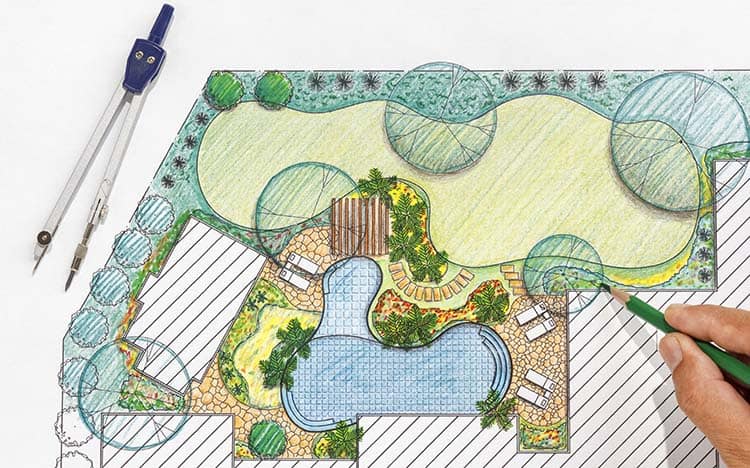
Once you’ve gathered up a vision for your landscape, you can start putting pen to paper. Use a tape measurer to measure distances across your hard, including the outside of your home.
Draw up a plan of your backyard on paper, using a scale. A scale reduces the distance in real life so that you can draw objects proportional to each other. For example, for every foot you measure in your yard, you would draw it as ¼” or ½” on paper. A 10’ fence would then be only 2 ½” on paper at a ¼” scale.
Once you’ve drawn your house, property line, and other objects you can’t move or alter, you can draw up concepts of your yard. Make several copies of your base plan, then use a pencil to draw a bubble diagram. An architectural bubble diagram uses rough shapes to show space relationships.
You can also draw bubble diagrams for your landscaping plan. Make a list of all the “rooms” or spaces that you want in your backyard as well as how you want them connected. If you want to have an entertaining space close to the house or want the kids’ play area within eyesight of a specific window, you can prioritize those locations by sketching a bubble on your plan.
Once you’ve developed your bubble diagram, you can start adding details. If you want a patio or hard surface in your entertaining area with a firepit in the middle, you can draw the dimensions of the patio to scale. If you want a path to connect one part of your yard to another, then you can add that as well. From there, you can draw in where you want to add plants, other hardscaping, or structures.
Creating Outdoor Rooms
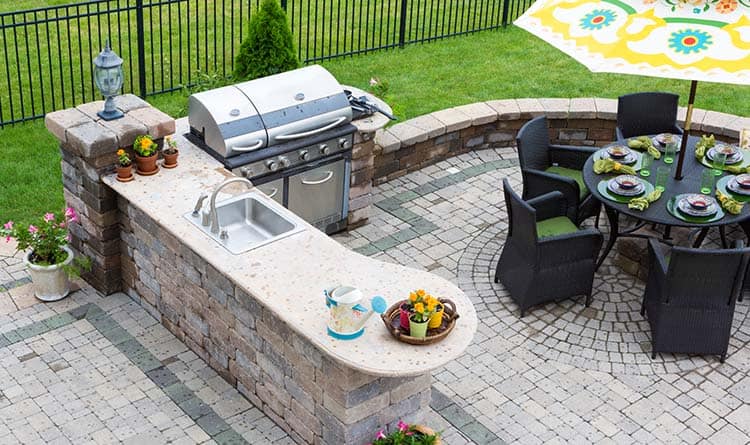
Similar to having different rooms within your house, you can create different rooms in your outdoor living spaces. Some rooms to consider may include dining or an entertaining area, such as a fire pit. You could also create a playroom for your kids that might post a playground or grass for them to run around in. You may even create a relaxation space with running water or sound barriers from your neighbors or the adjacent street.
One of the landscaping rules of thumb is that when creating a room or enclosing spaces, the vertical divider should be at least ⅓ of the length of the space. If you create a fire pit “room” that is 15’ x 15’, then you should provide a vertical divider that is at least 5’ tall. You can do that with hedges, trees, fences, or even a gazebo or pergola.
If you have a sloping backyard, you can also create different rooms by creating level spots. Use retaining walls, terraces, or steps to transition between the different elevations. The change of elevation then creates the vertical divider between the spaces, which you can then highlight or accent with plants of specific heights to maintain the ⅓ height rule.
When you create these level spaces, you can also push the feeling of a room by adding a floor, such as a patio, deck, or paver system. You can also add a ceiling or roof structure, which provides shelter, drawing people underneath it. Finally, adding furnishings, such as benches or chairs, also invites your guests to gather into the space.
DIY versus Hiring a Landscape Professional
Landscaping might be a fun hobby for some homeowners. However, not everyone has the physical ability or desire to design and maintain a landscape to enjoy it.
Landscape architects or contractors can help you plan and implement a vision for your landscape. However, for the most success, make sure you have a list of priorities. Be sure to communicate any needs. You may be able to list limitations on the budget or how much you’re able to do to maintain the landscape. You should tell them if you want specific ideas, such as a fire pit, or kid’s play area. Also provide a timeline, such as if you want to sell your home by a certain date or hope to have your family over for a holiday.
Many design and construction professionals will be willing to provide quotes for your project. Consider shopping around, comparing quotes, and conducting interviews. While it may be tempting to hire the service with the lowest cost, consider the quality of work or level of care you might be receiving for the cost.
You may also consider hiring a landscaping maintenance team to help you maintain your property.
How Does Landscaping Impact Your Home’s Value?
The Spruce says that the right landscape can increase your home’s property value by up to 15%. For a home that’s between $200,000-$300,000, the landscaping could increase the property value by $30,000-45,000. The right landscaping can increase interest in your home and increase the value of your final offer.
If the landscaping of your home can have such a huge impact on the value then you want to make sure you do it right, even if you don’t plan to sell your home for many years. The choices that you make when renovating your landscape will affect what your home looks like for several years, even decades.
When using landscaping to increase your home’s market value, considering the following:
- Coordinating your home’s landscaping style to your home’s architectural style. If you have a contemporary suburban home, a traditional English garden style may not be appropriate.
- Choose sophisticated planting. In other words, be intentional and create a thoughtful and cohesive plan for your landscape. Cheap or basic landscaping may look goof for showings but won’t continue to provide value to the home.
- Consider how your garden looks year-round. Don’t plant for just the summer months, which could lead to barren trees during the winter months.
- Plant trees that will last. Mature trees that won’t compromise the structure of your home bring a lot of value to future homeowners.
- Install automatic irrigation systems. Reduce how much work future homeowners have to put in to maintain the landscape. Alternatively, install low maintenance, drought-tolerant landscaping.
- Increase privacy. Plantings that help shield views from the neighbors or street help the future owners feel safer and more comfortable.
- Consider low maintenance landscaping. More than just reducing how much the future owners have to water, low maintenance landscaping helps minimize how much pruning, weeding, or training the future owners to have to do. Not every owner wants to shape topiaries weekly.
- Think of the first impression. Make sure that potential new homeowners experience the best of the home. This experience will also be the same experience that guests will have. If the first impression of the home is impressive, it’ll leave a better impression on potential buyers.
- Functional and Appealing Lighting. Adding lighting to pathways, entertaining spaces, accent plants, and entrances to the home can help improve safety and functionality. While a fire pit might be easy to find on a summer night, cozying up to the fire in the winter could be made easier by functional lighting.
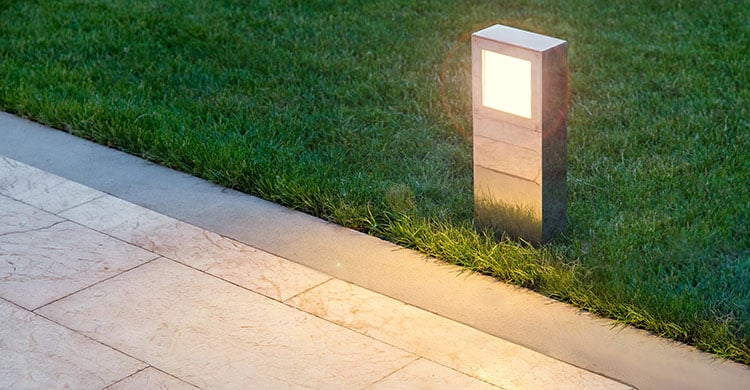
How to Choose Plants and Materials
With a plan and a vision for your landscape, you can finally start picking specific plants for your backyard. You should already have an idea for where you need hedges, trees, bushes, or ornamental flower beds. A part of your plan should also include how tall your plantings should get when they mature, as well as how wide they should get without pruning.
Consider the colors and textures you want your landscape to produce at different times of the year. For example, if you have many deciduous trees, they may drop all their leaves in the winter. Evergreen trees or shrubs can help provide green all year long. If you have a lot of plants that will stay green throughout the seasons, consider bright colored accent plants to help create variety, such as purple grass or shrubs.
Conduct a Light Study
One of the most important parts of choosing the right plants is understanding how much sunlight your landscape will receive at different times of the year. Some plants like a lot of sun while others need plenty of shade. When a shade plant gets too much sun, it will burn and die. When a sun plant gets too much shade, it may not grow well, or be prone to disease.
PennState Extension explains that plants can be categorized as follows:
- Full Sun is six or more hours of sunlight per day
- Partial sun is between four and six hours
- Partial shade is between two and four hours
- Shade is less than two hours of sun per day
To conduct a sun study, you may need to watch your yard for several days to months. If you don’t have the time to watch your yard for a year, you can try to rely on memory.
Another way to estimate is by researching the plants you currently have in your yard. Barren patches of lawn under a shade tree may indicate that portion of the yard rarely gets enough sun for the grass to grow. Keep in mind that the sun and shade portions of your yard may change over time as plants come into maturity. A young tree may not provide much shade in the first several years of growth. Therefore, your landscaping may need to adapt over time to compensate for these changes.
Annotate the plans of your landscaping with portions of the yard that receive plenty of sunlight at specific times of the day. This will help you select the right species and varieties of plants.
Understanding Climate Zones and Plant Hardiness
A large part of successful landscaping is understanding your climate and choosing plants that will thrive. If you plant something that is meant for a cooler or warmer, dryer or wetter climates than where you live, the plant will ultimately fail.
The US Department of Agriculture provides a map of zones that are defined by the coldest winter temperature. The zones are separated by 10° increments. However, there can be microclimates within your region that depend on your elevation or orientation, such as living on the north side of a mountain versus the south.
Many plant distributors will label their plants as being hearty in a range of zones. For example, Burpee’s website has a filter where you can shop for plants online by your climate zone. Each plant’s description includes a zone range where the plant will be happiest. This “Rose Marvel” Salvia, for example, can be grown in zones 4-9. However, the “Hot Lips” Salvia should be grown in zones 7-10.
A great way to figure out if a plant will be happy in your climate is to choose local and native plants. These plants will support the local ecosystem and thrive in your environment.
Environmentally Conscious Landscaping
One form of landscaping includes picking environmentally conscious or drought-tolerant plants. This type of landscaping is centered around re-creating the natural environment that the local habitats might be missing due to human development. Here are a few examples of eco-friendly landscape themes:
- Rain garden
- Butterfly Garden
- Bird Watching Garden
- Drought Tolerant Landscaping
- Wildflower Garden
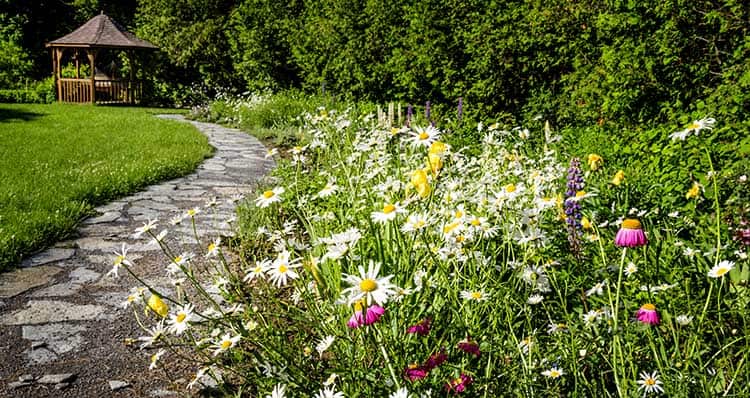
Some examples include if you live in a monarch migration path, planting different types of plants to give them food or resting places. The National Wildlife Foundation provides guides for local plants to choose from depending on your region.
Another example is if you live in an area with endangered bird species. You might pick trees that support their nesting habits or that support bugs that the birds naturally feed on. You can find many guides online, such as Wild-Bird-Watching.com, which lists recommendations for trees, shrubs, and seeds that could benefit bluebirds.
Landscaping can also use a lot of water unless you pick plants that naturally thrive in your claimant. By picking drought tolerant and local plants he can reduce the amount of water that you have to use to keep them alive and healthy. Can also help you reduce your water bill.
Hardscape Materials
While most people primarily think of plants while landscaping, hard surfaces can provide most of the definition of your spaces. For example, when building a level, hard surface for a fire pit patio, the type of pavers you choose can have a huge impact on the overall appearance of the space.
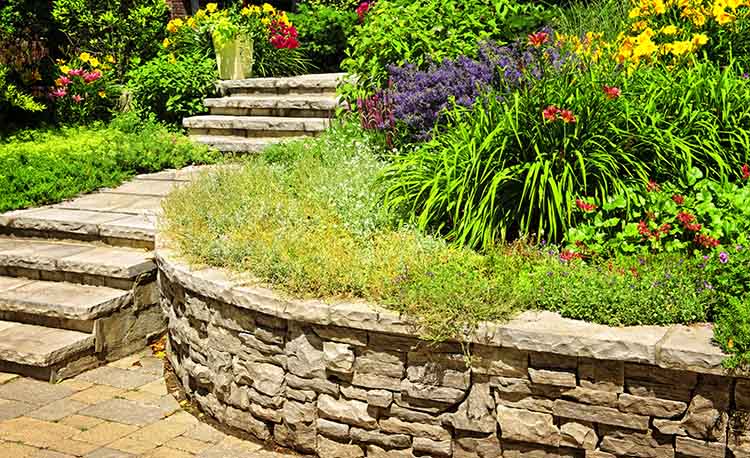
Here are some of the hardscaping materials you may consider:
- Walkways. Could include cobblestone, flagstone, stepping stones, gravel, river rock, pebbles, concrete, or brick. The walkways could be pervious or impervious, which means that rain can drain through the surface or drains away from the surface, respectively.
- Walls. Wood fences, brick or stone retaining walls, lattices, can be used to separate your rooms. Try to pick materials that complement the structure of your home.
- Groundcover: Mulch, gravel, river rocks, and other groundcovers can add consistent color across your landscaping. A conscientious decision on the color can help highlight the vision for your landscape. For example, a dark-colored mulch can be a dramatic difference from a light white or gray gravel.
- Structures: The material of your structures should be consistent in color or material. If you use a wrought iron gazebo in one location, you may choose to continue that aesthetic through a black stained wooden fence.
Hardscaping can decrease the amount of maintenance needed to maintain your landscaping, but too much hardscaping can feel uninviting and inhuman.
Make sure that you also consider the movement of the ground when choosing your hardscaping. The earth is dynamic. Rain and snow can cause erosion. Dirt under pavers can slowly erode over time, causing pathways or patios to become uneven. Hydraulic pressure behind a retaining wall can cause the wall to lean outward or bow over time without proper drainage.
Freezing and thawing cycles can cause foundations to become unstable. Plan for these natural events, planning for proper drainage and choosing the right foundation for your hardscaping.
Maintaining and Adapting Your Landscaping
If you’re renovating the landscaping of your home to increase the property value to sell, you may not consider the amount of effort needed to maintain the landscape in the future. However, if you want to make sure you get the most value out of your investment, especially if you plan to live in the home for many years to come, you will need to maintain and adapt your landscape over time.
Weekly and Monthly Maintenance
On a weekly and monthly bases, depending on the season, you will need to water and weed your garden. With careful planning, your landscape may not need much water. Automatic irrigation can help reduce the effort. Irrigation piping can be routed underground with sprinkler heads located in strategic locations. The sprinkler heads can be purchased with different spray patterns, such as wide sprays for lawns, or targeted sprays for specific plants.
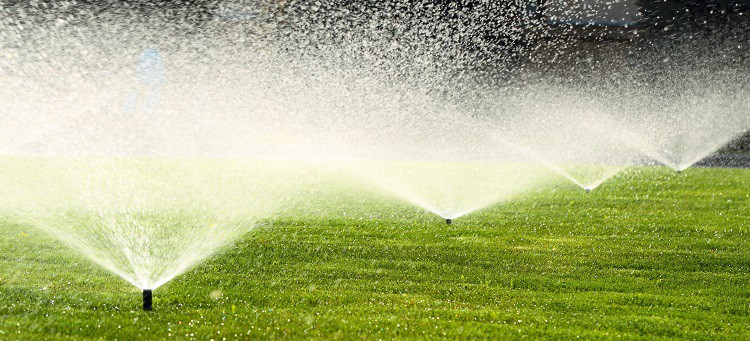
Weed barriers and mulch can help minimize weeding. A layer of plastic underneath a flower bed can help keep weeds from popping up from below. However, the plastic may need to be replaced over time. Plant roots and erosion can eventually tear through the fabric or plastic, allowing weeds to pop throw. Be careful with chemical weed killers, which can kill plants you want to keep, and can also be toxic to children to pets that use the yard.
Lifecycle of Plants
Over time, your plants continue to grow. Young plants are cheaper than mature plants. If you consider the mature height and width of the plants, your yard may look barren for several years until the plants reach maturity.
However, it is common or homeowners to buy plants without considering how much more the plants will grow. Trees often cause cracking of sidewalks or foundations, which requires the trees to be removed to prevent further damage.
Occasionally, plants will experience diseases and pests. You may be able to treat diseases and fungi, like powdery mildew or rust spots, with sprays and treatments. However, inevitably, you may need to replace a plant that dies.
If you are fortunate enough to live in your home for many decades, you may need to replace plants that reach the end of their life. Larger trees may last hundreds of years, but small perennial plants may only last a few years. Some plants become woody or stalky over time, and while they still live and thrive, may not provide the same look as what you originally intended. Prune or replace plants as needed to maintain a fresh look to your landscape.
Maintaining Hardscaping
Materials and structures that are exposed to the elements will gradually age. To keep the appearance of your landscape consistent, you may need to maintain these structures.
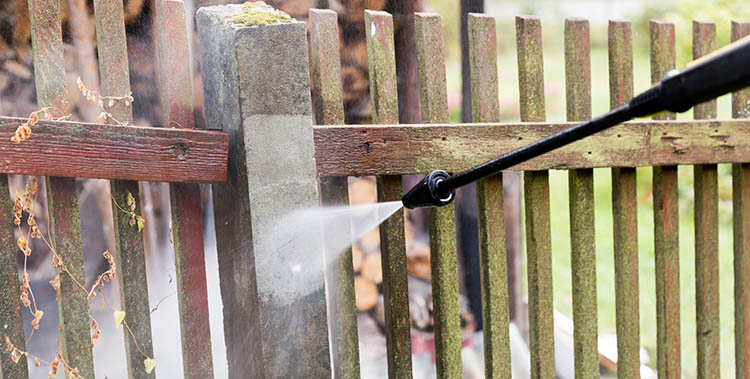
Untreated wood products, like fences, may be able to look new by power washing. Cleaning products can also help remove stains from the wood, though you have to be careful with exposing your plants to cleaning chemicals. Follow the recommendations of the manufacturer at any time you use outdoor products.
Surfaces that are stained, sealed, or painted, may need new applications on an annual basis. If you have a deck or gazebo that is painted or sealed, any wear in the finish can leave the wood prone to rotting. If you maintain your structures regularly, you can prevent a more expensive replacement in the future.
Metal structures will often experience rust and discoloration. You may be able to paint over these spots to prevent the rust from compromising the integrity of the structure.
Due to use and erosion, you may need to replace groundcover regularly. Mulch, made up of bark or wood chips, will gradually decay over time. To brighten the color, you can reapply a layer of mulch to make your yard look like new. Gravel can gradually compact into the ground, get washed away by rain, or kicked away. A fresh layer can relevel uneven spots and make your hardscape look clean again.
Any time you have moss, algae, or dirt build up on your landscaping, a quick, periodic cleaning can help you feel like you have a new backyard again.
Tying Your Landscape Together
Your perfect landscape starts with a holistic vision, incorporating an intentional style. Landscaping brings balance to the plants, hardscaping, and structures to provide an aesthetically pleasing and functional yard.
Once you’ve developed and implemented your vision, with proper maintenance, you can continue to enjoy your landscape for decades to come.


